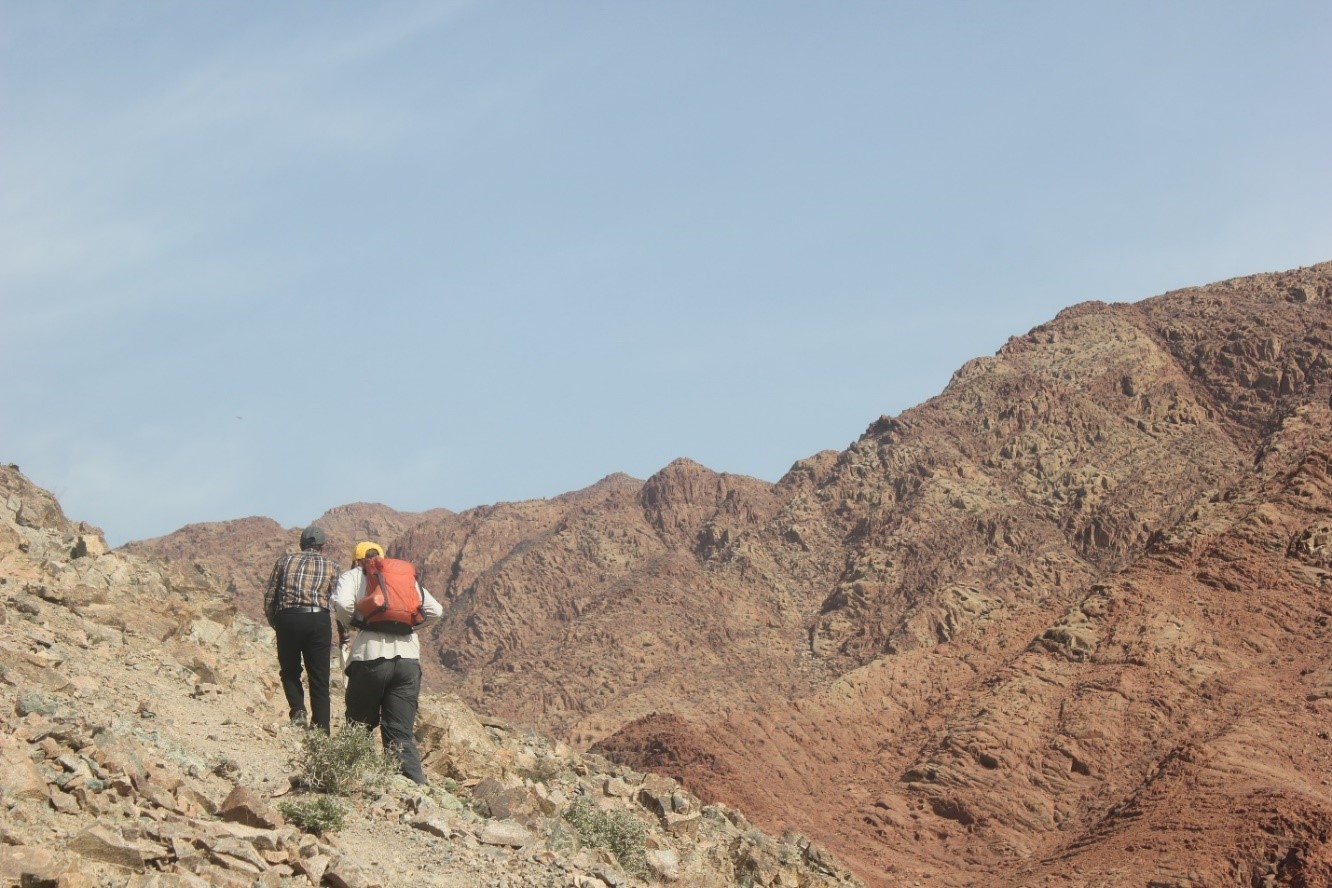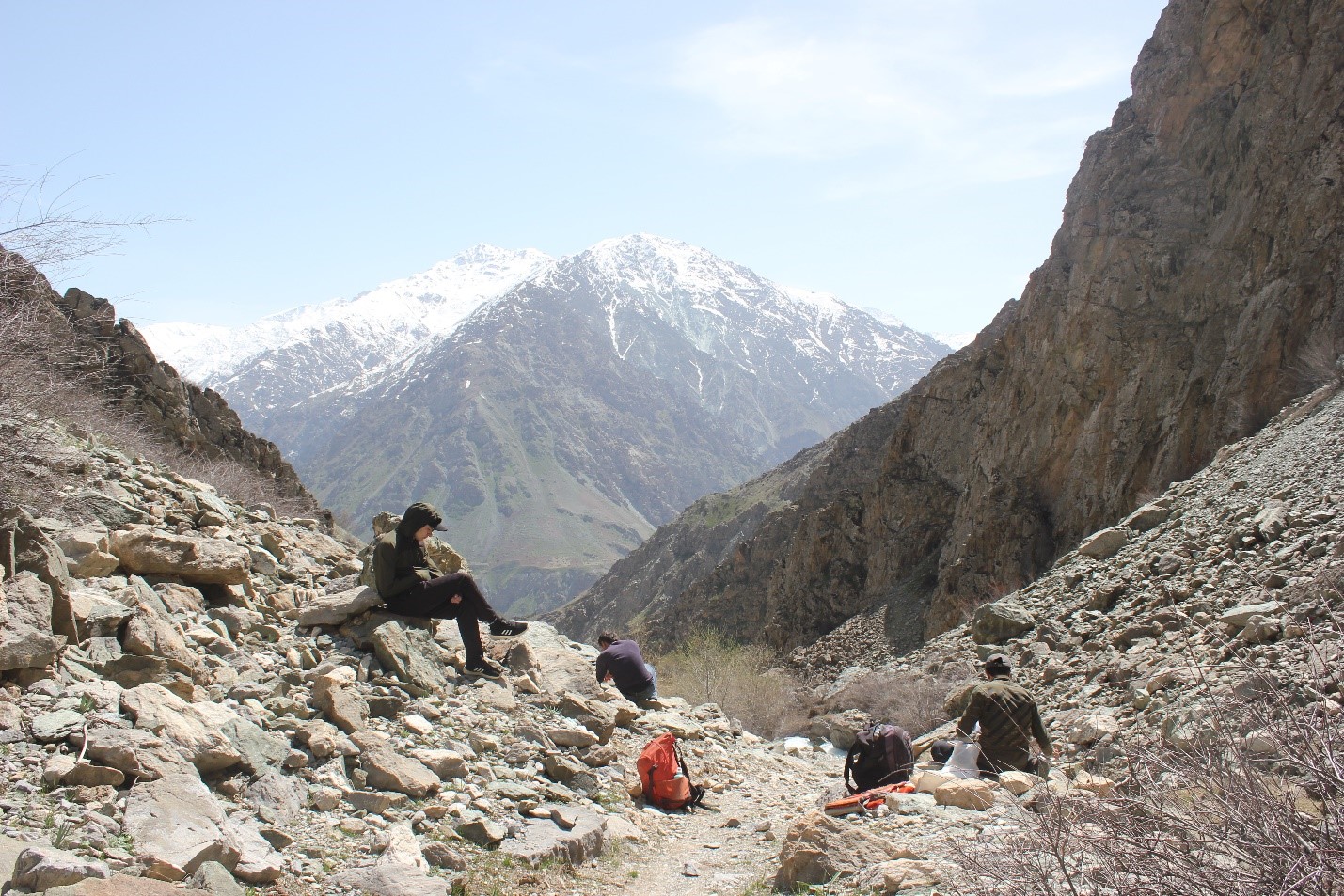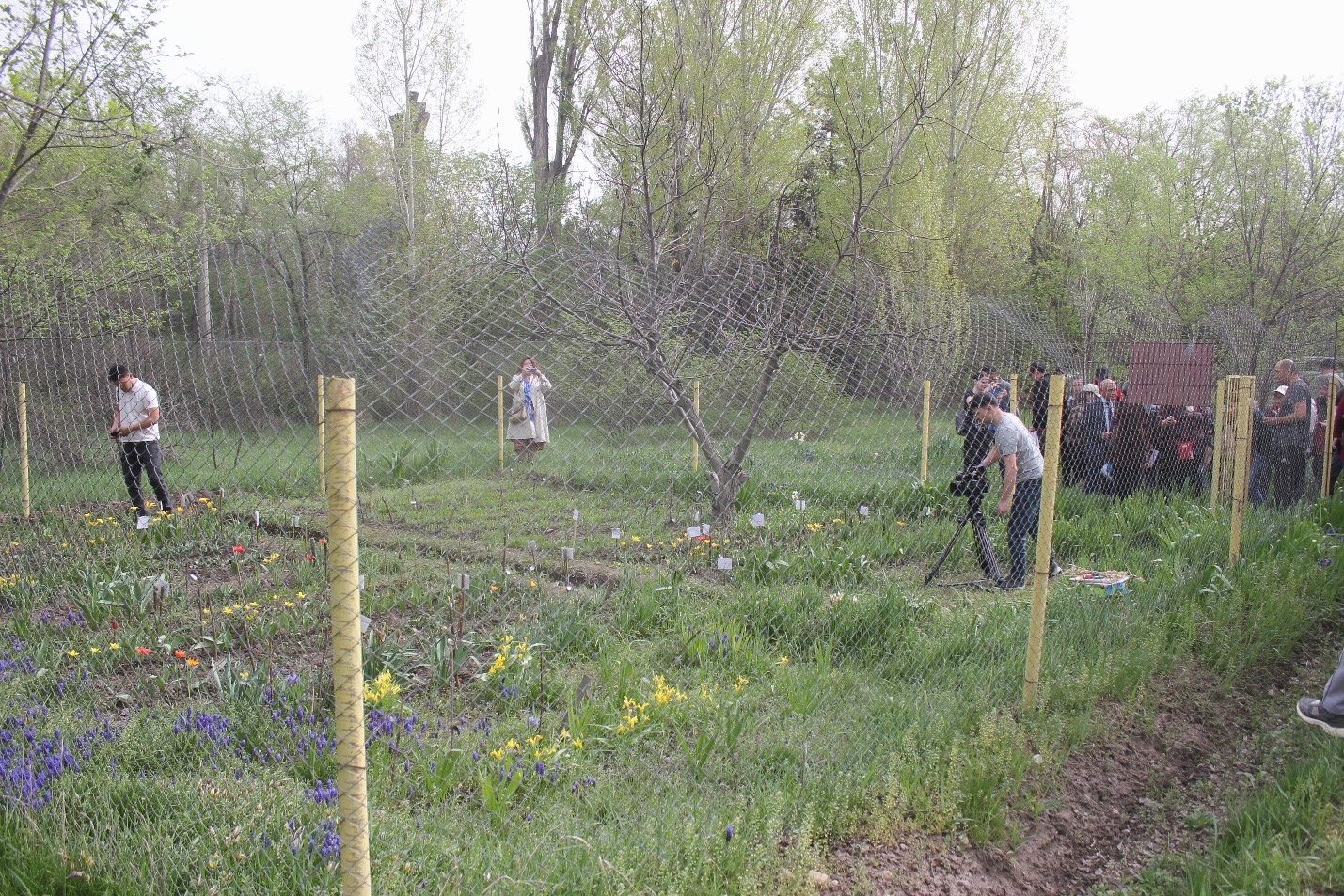By Brett Wilson, PhD student in the Department of Plant Sciences
During my early student life I never thought I would work in Central Asia, to be honest I knew very little about this region and its people; I would have even struggled to point to many of the countries on a map. It was one of the few regions not discussed in Geography classes, not an area anyone I knew had gone on holiday to, or was barely mentioned in the media. Yet here we are five years into my post-graduate life having spent much of that time working on conservation projects in Central Asia. A region shaped by the history of nomads, the Soviet Union and political instability. Yet it is home to wild apples, pears, and cherries, as well as almonds and walnuts, not to mention the iconic Snow Leopards, Marco Polo sheep, and Ibex. But my PhD work focuses on something a little more dainty, wild tulips.
Although I am a PhD student in the Department of Plant Sciences at the University of Cambridge, I am also a conservationist working with my iCASE partner, Fauna & Flora International (FFI). Together we are merging practical work with data analysis and therefore traversing the difficult research-implementation gap. FFI have been working in Central Asia for over two decades with local partners and have recognised for some time that local tulip species may be under threat. So, our project was established with the aims of clarifying the taxonomy of the genus Tulipa, identifying priority species for conservation within Central Asia and establishing a forward-thinking strategy to ensure the protection of these species heading into the future, all the while ensuring we work closely with local partners building capacity, supporting fieldwork and promoting collaboration across the region.
I am sure you are thinking why are you talking about Central Asia and not the Netherlands? Well, a little bit of background to this plant! Tulips do not naturally grow in the Netherlands or across most of western Europe but were brought here through horticultural trade. This trade originated in Turkey, primarily in Constantinople, now Istanbul, where the Sultans started breeding new domesticated varieties of tulips from wild populations. Many of these wild plants came from the middle east and Turkey, but some were likely brought along the silk road from Central Asia where they grew in abundance in the mountains and steppe. Today, we know that the majority of wild tulip species occur in this region with over 55% of recorded species growing there. So, it is here that is really the true home of tulips and where I must go to find these wonderful little plants hiding.
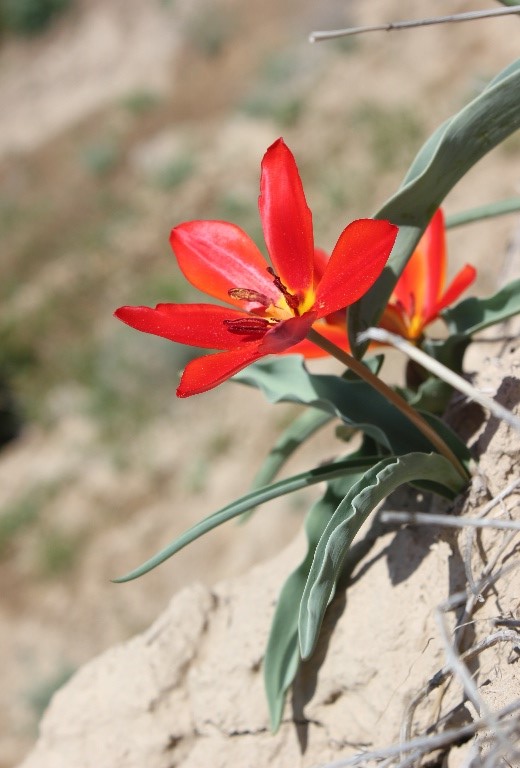
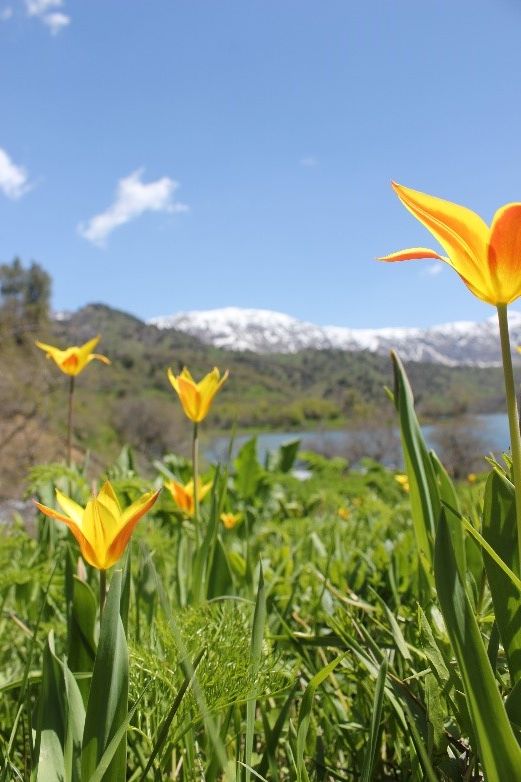
Currently, I am in my fourth and final year of the PhD and am sat here writing this blog from the FFI office in the city of Bishkek, Kyrgyzstan. As I near the end, I have started to think back to how the project has changed, grown, and transformed throughout what has been a tumultuous few years for the world. Fortunately, I carried out a large amount of fieldwork in 2019, but several years of pandemic meant that I have only now just managed to return to the region. Although difficult, those years were not wasted as we worked with local partners in Kyrgyzstan, Tajikistan and Uzbekistan to collect important samples which we used in genetic analyses in the lab in Cambridge. Finally, this year, I have the great pleasure to travel in the region once more and meet the incredible people who have helped make this work possible, whilst tying up a few loose ends, albeit under the dark storm clouds of Russia’s invasion of Ukraine.
I recently arrived in Kyrgyzstan from Tajikistan where I skirted the Afghan border, hiked the uninviting gorges of the Darvoz mountains and sweat in the unbearable heat of the semi-desert of the northern Khujand area collecting some remarkable and unique species and finally getting to experience the incredible culture of this country that is over 90% mountains! Now in Kyrgyzstan, we have been working carefully to collect a few important specimens; first a species that was only thought to grow in Kazakhstan, but we have now found populations in northern Kyrgyzstan and second a new species to be described from the Toktogul region of Kyrgyzstan. In May, with FFI and regional partners, we are running a Red Listing workshop where we will assess the conservation status of many Central Asian tulips. Though these are clear scientific outputs from the project it has also been an adventure where I have learnt to be very adaptable.
So I thought I would briefly, mention some highs and lows of my time working in Central Asia… The highs include standing on top of mountains and seeing the world like an eagle, eating delicious Laghman, making new friends over a bottle of vodka, discovering new populations of tulips in remote areas and being a part of a community that really cares about what they do to name but a few. Some of the low points have been pushing a broken car for two hours, trying sour horse milk and kurut, failing to understand the language and hangovers. All in all, however, it has mostly been positive and I know the experience will forever shape me, not only through development of my conservation, research, and leadership skills, but also because of the amazing people I have met and the unique cultures I have been able to experience along the way.

Crucially, over the four years, our team has successfully reorganised large parts of the taxonomy of the genus, synonymising and reinstating a range of species, as well as noting a few potential new species. We have also modelled climate change and recognised it as a significant threat to world tulip diversity, established new ex-situ collections in Kyrgyzstan and brought a number of seeds back to Cambridge to grow in the Botanic Garden. The final steps of this project are to analyse the evolutionary history of tulips, trying to pinpoint their origin and diversification process. This work will all provide a solid foundation for future research on the genus, which will no doubt take shape in the coming years.
So finally, we are left with the question… where will this research lead next? Well, as the funding of our Darwin project and the PhD project all draw to a close, we are seeing the end of a real push to understand and protect wild tulips in Central Asia. However, through our project, we have connected teams working in Tajikistan, Kyrgyzstan, Kazakhstan, and Uzbekistan as well as officially recording a number of species as Threatened, opening the door to greater regional cooperation, understanding, and funding opportunities. So as we in the U.K. take a little step back, we know that our partners will continue to push for the protection of tulips and importantly, through this NERC funded project, they are now in a much better position to protect these stunning wildflowers in their mysterious Central Asian home.
You can read more about our project on our website: www.tulipconservation.wordpress.com and about the impacts of climate change on tulips in our recent paper: https://link.springer.com/article/10.1007/s10531-021-02165-z





